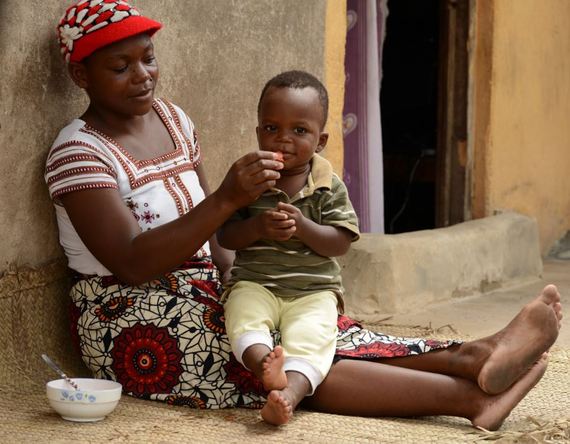As we look at the problem of food security in the world today with a nutrition lens, we see that almost every country is dealing with some form of malnutrition.
Hunger remains a day-to-day challenge for almost 795 million people. More than two billion people suffer from micronutrient deficiency, or hidden hunger, lacking the vital vitamins and nutrients they need to grow properly, live healthy lives and raise healthy families. Sadly we still have 159 million children stunted. This has far-reaching effects on individuals and impedes the economic development of nations. GDP losses from undernutrition can be 2-3 percent per year.
At the same time, an estimated 1.9 billion people are currently suffering from overweight and obesity, bringing with it a dramatic rise in non-communicable diseases that low and middle income countries are ill-equipped to cope with. Not a single country is making progress on tackling obesity.
The 2015 Global Nutrition Report further highlights the complexity of the problem, showing that almost every country in the world is affected. In short, more than one in three people on the planet is suffering from some form of malnutrition.
Given these alarming statistics, we must conclude that the food system is in urgent need of reform. It is not addressing the multiple malnutrition crises we face today. Rapid population growth, climate change and humanitarian crises are exacerbating these challenges. We cannot expect the food system to self-correct, we must take action to fix it.
Developing new forms of engagement at the global, regional and national level to address the complex and multidimensional drivers behind this problem is an essential part of the solution.
At the global level, there has been progress. A common vision integrating food and nutrition security has emerged which is reflected in Sustainable Development Goal 2.
It was also encouraging to see at the 42nd Annual Consultation of the UN Committee on World Food Security (CFS) held this week that nutrition security has been fully integrated into the discussions, engaging all stakeholders in finding solutions to malnutrition.
The CFS is not alone: the Scaling Up Nutrition Movement is definitely one of the best examples of these new partnership structures. In just five years SUN has brought together governments, civil society, the United Nations, donors, businesses and researchers in a collective effort to improve nutrition. To date, 55 countries and the State of Maharashtra have committed to scaling up nutrition by working collectively as a movement.
While we have managed to elevate the importance of nutrition and develop a common vision at the global level, we clearly need more alignment on priorities between the various global platforms.
At the national level, countries are taking major steps towards ending malnutrition. Strong political commitment plays a key role.
During the Second International Conference on Nutrition (ICN2), over 170 countries adopted a series of recommendations on policies and investments aimed at ensuring that all people have access to healthier and more sustainable diets.
Some African countries, like Tanzania, who recently co-hosted the first Global Summit on Food Fortification together with GAIN, are taking the lead in the fight against malnutrition.
But we need many more countries to join this fight and be active within existing multi-stakeholder partnerships to maximize their impact.
At the regional level of food systems, we have seen perhaps the least attention. Regional agri-food systems are dependent on the natural resource bases and climate conditions of particular regions. Within regions countries also share common challenges, for instance related to crops, value chains and water availability. And many regions share the same malnutrition challenges.
Some important regional partnership efforts were shared at the CFS -- from the work to integrate nutrition into the African Union Comprehensive Africa Agriculture Development Program (CAADP), to the formulation of Regional Guiding Framework for Achieving Zero Hunger in Asia and Pacific. But we must acknowledge that we still have very few effective models or regional platforms to address food and nutrition security and this is an area where we must give more attention.
With the adoption of the 2030 Development Agenda and the Global Goals, we have the opportunity to use SDG 2 -- "End hunger, achieve food security and improved nutrition, and promote sustainable agriculture" -- to build alignment among global platforms. This will allow us to advance more quickly together around a common vision and reach the target of ending malnutrition in all its forms by 2030.
As we look to using more multi-stakeholder partnerships, let's not reinvent the wheel. At GAIN we have learned a lot already implementing these over the last decade: like being inclusive and making sure all key stakeholders are around the table; recognizing the central role for governments; addressing conflicts of interest up front; defining transparency rules; and establishing clear targets for performance measurement. Multi-stakeholder partnership is a new term, but underlying it are solid principles of working together in a more inclusive and effective way, and not sticking in our silos.
People are at the heart of the new Global Goals. And if we are to achieve them, we must work together and where relevant use multi-stakeholder partnerships to engage, negotiate and deliver results with the communities suffering most from malnutrition.
